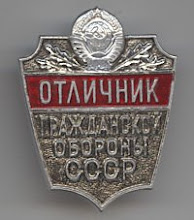So far the material from the 40s and 50s hasn't been all that ground-breaking; a lot of it is neat but it hasn't really challenged my longstanding thesis about the Federal Civil Defense Administration and its many problems. The stuff from the 80s is quite another matter. Only a very limited amount of documents from FEMA are available in the National Archives, and half of the boxes I've ordered so far were withheld and I was told that I would need to file a FOIA request to look at them. Those I've been able to access so far, however, have forced me to seriously reconsider some of my assumptions about civil defense in the Reagan era.
One of the big surprises so far was this August 13, 1982 memorandum from FEMA Public Affairs chief Jim Holton about The Day After. One would hardly suspect that this 1983 ABC television movie had been edited at the request of FEMA to be more flattering to civil defense, but it was. As Holton noted,
The attached script for the forthcoming ABC-TV prime time movie was given to us last week and, as you'll notice on the cover sheet, it is the latest in a series of revisions. This version reflects a number of changes which DoD insisted on before agreeing to support in the making of the film, support such as the use of National Guard troops, certain unclassified facilities, military vehicles and aircraft, etc. Unfortunately, our only contribution to the production is some dosimeters, the withdrawal of which would not bother ABC films.
It should be noted, however, that the revised script has been changed to reflect suggestions we made to the producers several months ago and which had not been included in the draft before this one. DoD, in using their clout to get the changes they wanted also leaned on ABC to make the FEMA-requested amendments, nearly all of which they responded to. They are on pages 30, 31, 176, 177, and 178.
What precisely were these changes? Unfortunately, I do not have my DVD of the film here in College Park, so I am forced to rely on memory. The problem is complicated by the fact that The Day After, as originally filmed, was intended to to be a four-hour film aired in two parts, and a great deal of it ended up on the cutting room floor. As a result I'm not sure how much FEMA impacted the film as aired, but its impact on the shooting script appears undeniable. From the the revision of the script in FEMA's records, I suspect the changes were that skeptical references to Crisis Relocation Planning--the evacuation scheme being pushed by FEMA in the early 1980s--were toned down, as was the post-attack scene where an agronomist is attempting to convince skeptical farmers to scrape off their topsoil and one of them makes an angry outburst.
FEMA got to edit the script of The Day After? Who would've thought?

